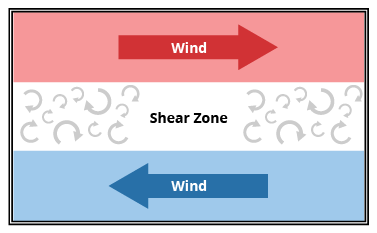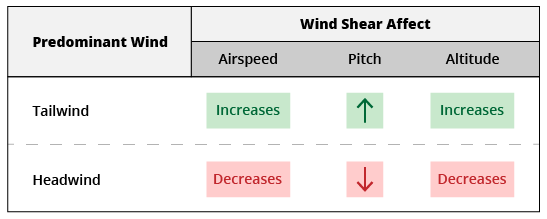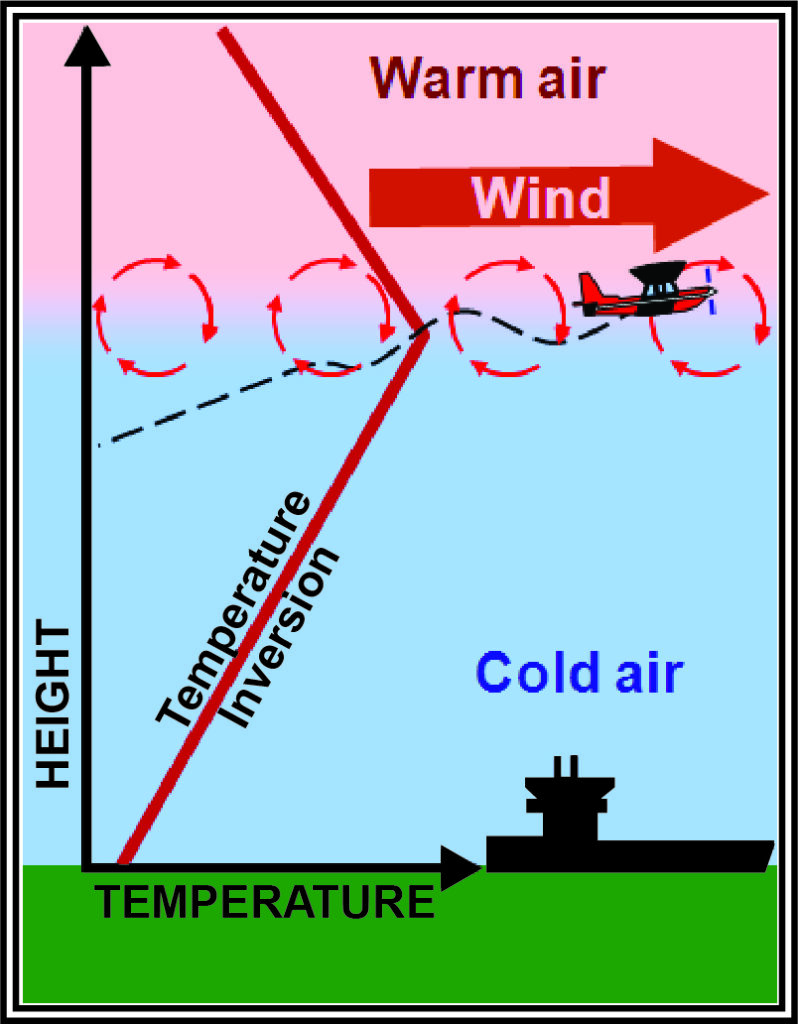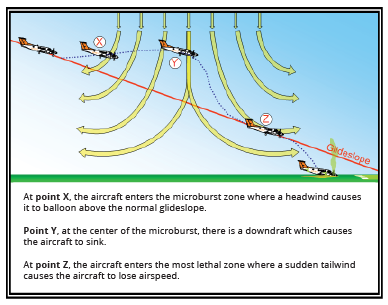In our summer flying poll, the 3rd most concerning weather phenomena during the summer is low-level wind shear. Our previous 2 blogs discussed thunderstorms, which often can cause low-level windshear, but thunderstorms are not the only cause of it.
A Case Study
[The following are excerpts from Accident Number: ERA17FA174]
On May 5, 2017, about 1922 eastern daylight time, a Cirrus SR22, N271TS, impacted terrain during a go-around at the Clearwater Airpark (CLW), Clearwater, Florida. The private pilot was fatally injured, and the airplane sustained substantial damage. When the airplane was about 8 miles north of CLW, about 1915, Tampa Approach terminated radar services, and the pilot proceeded to CLW. There was no further ATC contact with the pilot.
As the accident airplane approached runway 16 at CLW, an airline transport pilot (ATP) was entering the traffic pattern at CLW in his Grumman Tiger airplane after deciding to terminate a local flight due to approaching convective weather. The ATP heard the accident pilot announce over the airport’s common traffic advisory frequency that he was west of the airport and inbound for landing. The ATP told the pilot that there was a noise restriction on the west side of the airport and that he would need to enter the traffic pattern from the east. The pilot acknowledged and told the ATP that he would follow him in. The ATP said that weather was approaching the airport, and as he crossed over the approach end of the runway to land, the winds became increasingly strong and gusty. It took a long time to get the airplane on the ground, and he had to use full aileron deflection to maintain control. The ATP said that there was wind shear, but he could not estimate the speed or direction of the shear. He estimated that the wind was from between 240° and 270° at a velocity of about 40 knots.
According to the ATP, while he was on final approach, he saw the accident airplane on the downwind leg and was aware that it was close behind him in the traffic pattern, so he cleared the runway quickly. He then radioed the pilot and told him that the wind was “snotty” at the approach end of the runway and to be careful. The pilot acknowledged. The ATP then taxied to his parking spot and did not see the accident airplane land. The ATP said that after he parked his airplane the wind was blowing so hard that it was a struggle to get the canopy cover on his airplane. It had also started to rain. The ATP was unaware that the accident airplane had crashed until he heard sirens on the airport and responded to the location of the accident.
An airport employee observed the accident airplane on final approach for runway 16. He said it was very windy and gusty, and rainstorms were approaching the airport. The employee said that the airplane appeared to make a normal approach to the airport before it disappeared from his view. The employee then heard the airplane’s engine go to full power and saw the airplane in a vertical climb before it rolled left onto its back and descended out of view. The witness said that he knew the airplane was going to crash and started yelling for someone to call 911. He then responded to the accident site and found the airplane in an inverted position adjacent to the taxiway.
Data downloaded from the airplane’s Avidyne electronic primary flight display (PFD) revealed that the flight from MAO to CLW was recorded. The data showed the airplane approaching CLW from the northeast, making a 360° left turn over the airport, and entering a left downwind leg of the traffic pattern for runway 16. The airplane continued to turn onto the base leg and then onto final approach before the data ended about 1922 when the airplane was over the runway.
Recorded weather at 1935 included wind from 280° at 14 knots with gusts to 23 knots, visibility 10 miles, scattered clouds at 3,200 ft agl, a broken ceiling at 4,500 ft agl, an overcast ceiling at 6,000 ft agl, temperature 21°C, dew point 12°C, and an altimeter setting of 29.79 inches of mercury.
A search of weather briefing sources, such as Lockheed Martin Flight Service, Leidos weather briefings, and Direct User Access Terminal Service indicated that the pilot did not receive an official weather briefing from any of these sources.
The pilot did receive a weather briefing at 1012 through ForeFlight for a flight between GON and HGR; no ForeFlight weather briefing data was requested or received for a flight to CLW. It is unknown if the pilot checked or received additional weather information before or during the accident flight.
The airplane’s flaps were observed at 100% (fully extended) post accident. The airplane likely entered an uncontrolled descent and impacted the ground before the pilot was able to
raise the flaps to 50%, as required during a go-around.
The National Transportation Safety Board determines the probable cause(s) of this accident to be: The pilot’s decision to attempt to land while a line of rain showers with microburst activity was crossing the airport, which resulted in a loss of control during a subsequent attempted go-around.
While the loss of life from this accident is horrible, we can use it as a learning opportunity and hopefully keep ourselves and our passengers from encountering the same dangers of low-level wind shear.
What is Wind Shear?
Wind shear is the change in wind speed and/or direction, usually in the vertical dimension. This can happen at any level in the atmosphere. The characteristics of the wind shear profile are of critical importance in determining the impact for an aircraft on takeoff or landing.
Why Does Wind Shear Occur?
When a compressible fluid, such as wind (depicted in the image below as red), changes speed and/or direction over a short distance. An exchange of mass occurs between the now conflicting currents (depicted as red and blue below). This generates friction creating eddies along a shared and shallow mixing zone. The zone of induced eddies and mixing (depicted as white below) is the shear zone.
Why is Wind Shear Hazardous?
Wind shear can cause problems for any aircraft and pilot.
Wind shear can cause a tailwind to either become calm or have a headwind component. In this instance, initially the airspeed increases, the aircraft pitches up, and the altitude increases.
Wind shear can cause a headwind to either become calm or have a tailwind component. In this instance, initially the airspeed decreases, the aircraft pitches down, and the altitude decreases.
- When the aircraft is on the glide path, the aircraft will drop below the glide slope.
- The pilot applies power to regain speed and pulls the nose up to climb back to the glide slope.
- As airspeed is regained, the amount of thrust required is less than that required for the previously existing headwind. If thrust is not reduced appropriately, the aircraft will climb back above the glide slope and the aircraft will land long and hot.
- If the aircraft is near to the ground when encountering wind shear, the margin for safe recovery is significantly reduced.
- In this scenario, the aircraft is often in a high-drag configuration. Increasing the angle of attack produces only a slight or momentary increase in lift accompanied by a tremendous increase in drag as the maximum value of the lift/drag ratio is exceeded.
- The result is a momentary arrest of the descent with decreasing airspeed followed by a large increase in an already high descent rate.
What Factors Impact the Effect of Wind Shear on an Aircraft?
Many factors affect the outcome of how wind shear will ultimately affect an aircraft. Aircraft speed, aerodynamic characteristics, power-to-weight ratio, powerplant response time, and pilot reactions are among the factors that have a bearing on wind shear effects.
4 Common Conditions Creating Low-Level Wind Shear
- Low-level temperature inversion
- A temperature inversion forms near the surface on a clear night with calm or light surface wind. Wind above the inversion may be relatively strong. A wind shear zone develops between the calm and the stronger winds above.
- Eddies in the shear zone cause airspeed fluctuations as an aircraft climbs or descends through the inversion. Aircraft enter this wind shear typically climbing from takeoff or approaching to land when passing through the inversion. Therefore, airspeed is relatively slow and perhaps only a few knots greater than stall speed.
- Fluctuations in airspeed may induce a stall precariously close to the ground.
- When taking off or landing in calm wind under clear skies within a few hours before or after sunrise, be prepared for a temperature inversion near the ground.
- This becomes a near certainty if the wind from 2,000 to 4,000 feet AGL is 25 knots or more.
- Allow for a margin of airspeed above normal climb or approach speed to alleviate danger of stall in the event of turbulence or a sudden change in wind velocity.
- Wind shear in a frontal zone
- While wind changes abruptly in the frontal zone, not all fronts have associated wind shear.
- The consideration of wind shear is most critical when it occurs close to the ground.
- Warm fronts often create wind shear between the surface to 5,000 feet AGL from 6 hours before the warm front’s passing until it passes. Wind shear conditions often cease after a warm front passes an airport.
- When cold fronts move at 30 knots or more, they often create wind shear starting at 5,000 feet AGL above the airport when the front passes over the airport until about 3 hours after.
- Whenever the surface wind associated with a front is strong and gusty, there will be wind shear.
- Always follow your AFM recommendations, procedures, and limitations when you expect to enter wind shear.
- Downbursts and microbursts
- As discussed in the previous Thunderstorms blog [link to Part 1], thunderstorms can cause downbursts and intense microbursts.
- Microbursts can last for more than 10 minutes and the amount of area affected by them changes over this period of time. Below is an image of their life cycle.
- Upon reaching the surface, these bursts of air spread outward in all directions from the downdraft center. This causes the presence of both vertical and horizontal wind shears that can be extremely hazardous to all types and categories of aircraft, especially at low altitudes.
- Microbursts are particularly harmful during takeoff and landing. The image below depicts the effects of landing during a microburst.
- Surface obstructions
- Buildings, such as hangars, near a runway can cause sudden changes in wind velocity. If a runway has a prominent treeline on one side, these trees may cause shear zones when wind horizontally or vertically spirals into your flightpath.
- Mountains and mountain passes that are close to final approach paths can cause wind shear. Strong surface winds blowing through these passes can cause serious localized wind shear during the approach. Pilots should expect this type of wind shear when there are strong winds.
Best Methods to Cope with Wind Shear
- Understand situations where wind shear may be present.
- Never knowingly fly into wind shear when the winds are in excess of the limitations of the aircraft according to the AFM.
- When you encounter wind shear, understand the magnitude of the change in airspeed. This will help you respond with the correct application of thrust.
- Be prepared to go-around immediately on approach, consider flying the final approach with less than full flaps, and, as always, consider adding half of any potential gust factor.
What Should You Have Learned?
Low-level wind shear can have disastrous effects on aircraft at low altitudes. Wind shear can occur when fronts are passing through the terminal area, thunderstorms are in the vicinity, low-level temperature inversions are present, or there are buildings or trees near the runway to create localized wind shear. Pilots taking off or landing should be cognizant that wind shear can cause dramatic headwind to tailwind shifts. In this instance, initially the airspeed decreases, the aircraft pitches down, and the altitude decreases. Depending on where the aircraft is on the final approach, the pilot may or may not be able to add power appropriately to continue making a safe landing. In this environment, it is especially important for pilots to consider every approach as a potential go-around or missed approach. Whether flying solo or part of a crew, it should be verbally briefed as such.
A landing is a luxury afforded to a pilot when each risk presented has been safely managed.






